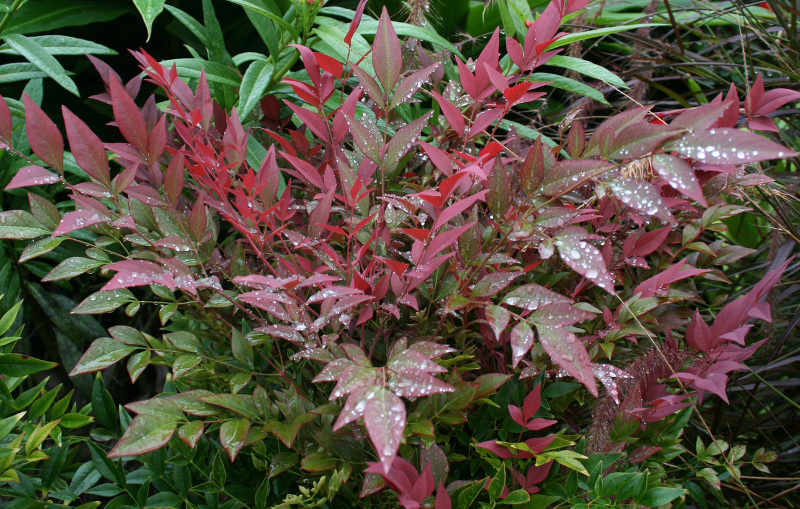Nandina (Nandina domestica) is commonly known as heavenly bamboo or sacred bamboo. Nandina is an evergreen shrub in the Berberidaceae (barberry) family. To encourage a thriving Nandina plant, proper watering techniques and practices should be employed to promote a healthy root system.

How To Tell If Nandina Needs Watered
Nandina are known to be incredibly drought tolerant and are not considered to have heavy water needs. Signs that your Nandina plant needs water include wilting leaves that are dry or yellowing. If the soil around the base of the plant looks dry, dig your finger into the soil to see if there is any moisture below the soil. If the topsoil and deeper soil is dry and cracking, your Nandina is due for a nice deep soaking drink.
Overwatering is as dangerous to the plant as under watering and should be avoided. Never water if there is visual standing water around the plant or if moisture is detected under the topsoil.
How Often To Water Nandina
Younger or more newly planted Nandina will have higher water needs than mature or established plants. Newly planted Nandinas should be given a nice soaking watering when planted and weekly until established.
Once the plant is established, watering can be done on an as needed schedule. If weather conditions are hot and sunny, continue soaking watering weekly. If weather conditions are more mild or rainy, do not add supplemental watering until the soil around the plant dries out. Nandina is a drought tolerant plant so once it is established it has low water needs.
If your Nandina is in a potted container, you will likely need to water more frequently since the soil will dry out more quickly. Monitor the soil moisture by digging a finger into the soil every few days to determine if the plant needs water. When soil is completely dry, water thoroughly.
Best Time to Water Nandina
If your Nandina plant needs watering, the best time of day to water is in the morning or evening from spring to fall. Watering in the morning or evening outside of the peak sun hours of the day allows for best root absorption versus sun evaporation. Nandinas require much less water in the winter.

How To Water Nandina
Step 1 - Observe your Nandina and assess its water needs.
First look at the overall health of the plant’s foliage, looking for signs of wilt or discoloration pointing towards needing water. Dig your finger about an inch or two into the soil to see how dry the soil is below. If moisture is detected, wait until the soil is completely dry.
Step 2 - Apply water to the base of the plan
Using a watering can or hose, water around the base of the plant. Try to keep the rest of the plant dry. This will help prevent fungus from growing on the leaves. Water thoroughly so that moisture can penetrate the soil to the root zone without allowing water to pool around the plant.
Step 3 - Check back after watering
After watering, check back with your plant to make sure you didn’t overwater or underwater. If soil has dried out completely it's time for another watering!
Nandina Watering Tips
- Newly planted Nandinas will have higher water needs than mature plants
- Nandinas are drought tolerant
- Water around the base of the plant if possible
 |
Author Katie Endicott - Published 10-13-2021 |
